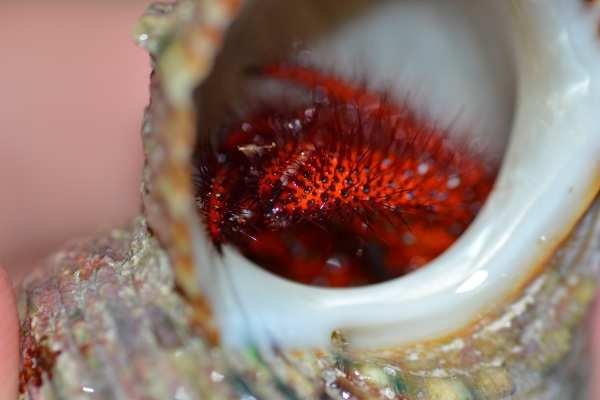Ecology
Hermit crabs are an extremely successful group and have considerable ecological importance which stems chiefly from the familiar behaviour of carrying around a gastropod mollusc shell. A shell occupied by a hermit crab offers a stable but mobile and defended substrate guaranteed to always be relocated to favourable conditions and a food supply. These benefits are exploited by an impressive suite of other invertebrates as well encrusting algae, fungi and a range of protozoans. These organisms may be mutualists of hermit crabs, have no appreciable impact or may reduce the crab’s fitness; stealing food, degrading the gastropod shell or even predating upon hermit crab eggs. Further, while many are incidental occupants of the shared gastropod shell, a considerable proportion are obligate symbionts, requiring the use of a hermit crab inhabited shell for at least part of their lifecycle.
Hermit crabs are highly opportunistic and diverse in their feeding strategies; filter feeding, deposit feeding and scraping. Due to its substantial size, Dardanus megistos is also a predator of a wide assortment of other invertebrates but also fishes, though all opportunistically. In turn, hermit crabs are preyed upon by a variety of animals. On the Great Barrier Reef, predators of D. megistos include mantis shrimp, octopus, puffer fish (Tetraodontidae), stingrays, eagle rays and certain sharks; the epaulette, zebra, tawny nurse and even tiger sharks.
 |
| Photo: Arnault Gauthier, Heron Island, 2012 |
|